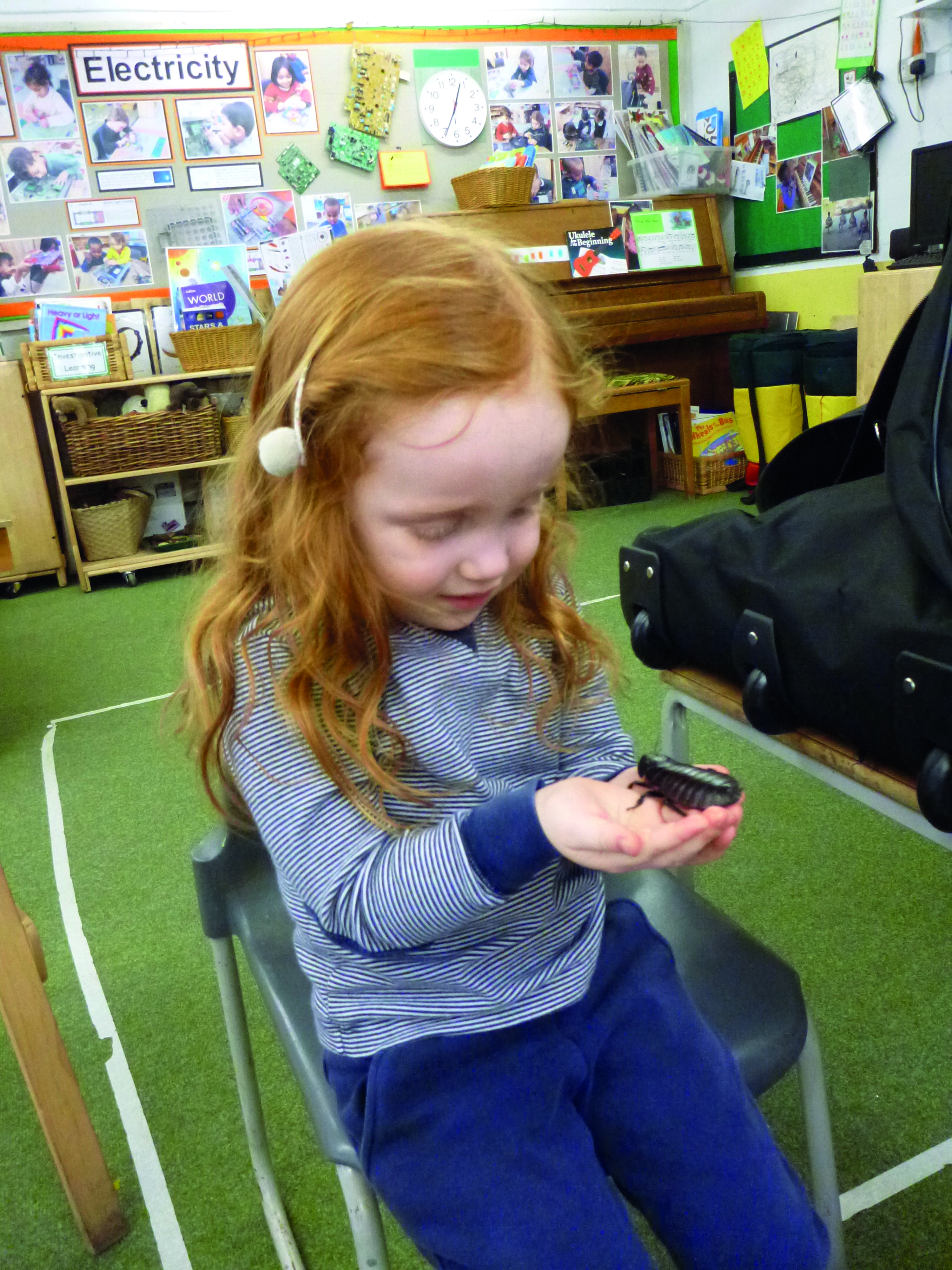
OUR ANIMAL ENCYCLOPAEDIA
Our children are encouraged to follow their own interests, so after receiving a lovely financial donation, we invested in a research library. When Ana arrived upset at nursery one morning, her key worker supported her by quietly sharing some factual books from our library. Looking at the books calmed her and prompted her to get a small-world elephant, which she began to find out more about. She drew pictures and wrote about the elephant on a piece of A3 paper.
Ana and her key worker’s rich conversation enticed others to join in. Over three weeks, inspired by looking at an animal encyclopaedia, the children immersed themselves in compiling their own book by researching their chosen animals using books and iPads and devising their own A3 pages.
There was some rudimentary mark-making, some clear pictures, phonetic spelling and a great sense of representation as they dipped in and out of their work, finding and recording interesting animal facts. Children drew pictures or used cameras to photograph corresponding small-world animals to illustrate their pages.
The children then ordered the pages alphabetically – including elephants, grasshoppers, leopards, polar bears and, finally, wombats. They numbered them like in their reference books and included a page listing all the ‘researchers’’ names and photographs. The children’s animal encyclopaedia now sits proudly alongside the other factual books in our research library and continues to be used.
ANIMAL VISITORS

We are an inner-city setting, so many of our children have limited experiences of getting up close to living creatures and have less contact with nature than children living in more rural areas. We try to fill this gap by encouraging real creature visitors into our nursery.
Recently we had a visit from two Metropolitan mounted police officers and their horses. To get up close to such large and powerful creatures was magical for the children. Another regular hands-on animal encounter is with Zoolab, where the children meet creatures including centipedes, tree frogs and tarantulas.
When we are bringing real creatures into our setting we try to do so in a respectful and reflective manner. Animals are not there for our entertainment, and we need to demonstrate deference. We were once given a reptile as a pet, but decided that a nursery was not the best place for it. That said, many of our children are unable to keep pets, so we do have a small aquarium with Mbuna fish.
Children look forward to it being their week to take responsibility for the fish with their parent. Their duties involve checking the water temperature and feeding the fish. We notice that the fish, and other animals, have a calming effect on the children.
Enabling the children to have a real connection with the living world does bring awe and wonder. We try to be reflective of the seasons, so incubating and hatching chicks is a popular annual activity. Seeing the eggs wobble and hearing the chicks tap on the eggs and break out of the shells is an experience that the children will always remember. It enables the children to have a greater understanding of lifecycles but also helps them to develop empathy and experience caring for living things.
SMALL-WORLD PLAY

In order to engage our children in rich, imaginative play, we have ensured that we have a good range of small-world animals (ours are produced by Schleich). These are high-quality and resilient to lots of play – including being immersed in dirt and water – and, importantly, are in proportion and contain lots of detail.
We find that having slightly different small-world play animals, such as buffalo and wildebeest, instead of being restricted by domestic or farm animals, can bring a real depth of learning and broaden children’s experiences.
Also, rather than having one of everything, such as a range of rainforest animals, we like to have groups – for example, a Bengal, Siberian and Sumatran tiger for the children to classify and compare, or a male and female lion and some cubs for them to explore and to challenge their thinking.
We encourage the children to use the small-world play animals alongside natural resources, such as wood chips, moss, petals and leaves, to enhance the provision. Our children often use these with wooden blocks to create their own imaginative landscapes for the animals to roam around.
Rachel Keeling Nursery School is an Outstanding setting in Bethnal Green, east London









